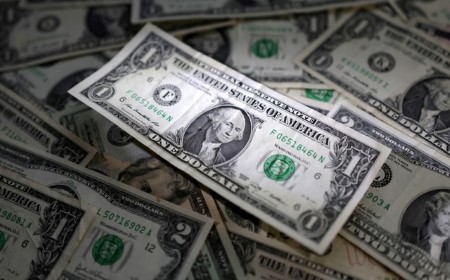BENGALURU, Sept 7 (Reuters) – The dollar’s strength will be difficult to overcome for most major currencies by year-end, according to a Reuters poll of forex strategists who said the risks to their greenback outlook were skewed to the upside.
Backed by a strong economy and rising US Treasury yields, some of the highest among developed economies, the dollar despite bouts of weakness has stayed resilient against most major currencies.
Hitting a six-month peak as jitters over China and global growth weighed on risk appetite and expectations the US Federal Reserve will hold interest rates higher for longer, the safe-haven dollar recovered almost all of its mid-year losses and is now up over 1% for the year.
That strong performance has brought the long-held view of a weaker dollar in the short to medium term under review.
A solid 81% majority of analysts, 43 of 53, who answered an additional question said the risk to their dollar outlook was to the upside, the Sept. 1-6 Reuters poll showed.
“We think dollar strength has got further to run and will sustain over the next three months,” said Jane Foley, head of FX strategy at Rabobank.
But the dollar was expected to have weakened modestly against most major currencies in a year, according to the median view of around 70 foreign exchange strategists, with the bulk of it coming next year as the first Fed interest rate cut comes closer.
“In the next six to nine months, we are expecting the Fed to start to cut rates and it’s at that point where we think that the dollar will re-weaken again,” said Lee Hardman, senior currency analyst at MUFG.
The euro, unable to make any significant headway over a deteriorating growth outlook and up only 0.13% for the year, was forecast to trade 1.7% higher at USD 1.09 in three months, largely unchanged from an August survey.
It was forecast to have gained 2.7% to USD 1.10 and 4.6% to USD 1.12 in six and 12 months, respectively.
The Japanese yen, already down over 11% for the year against the dollar, trading at 147/dollar on Wednesday, was forecast to pare back all of the current year’s losses and change hands at 132/dollar in the next 12 months.
Sterling, already up nearly 3.5% in 2023 was forecast to gain another 3% to USD 1.29 in a year.
Elsewhere, other Asian currencies stand to face significant friction in recouping losses for the year, according to the poll. Almost all were forecast to at best stay within a range or trade modestly higher against the dollar in coming months.
In Latin America, the Brazilian real BRBY and the Mexican peso, up around 6% and 12% against the dollar, respectively, were expected to lose only slightly by end-year.
The Argentine peso, however, down 50% for the year, could be heading for another major devaluation, and lose a further 17% by end-November, the poll found.
(Reporting by Sarupya Ganguly; Polling by Sujith Pai, Devayani Sathyan, and Pranoy Krishna; Editing by Hari Kishan and Andrea Ricci)







 DOWNLOAD
DOWNLOAD










